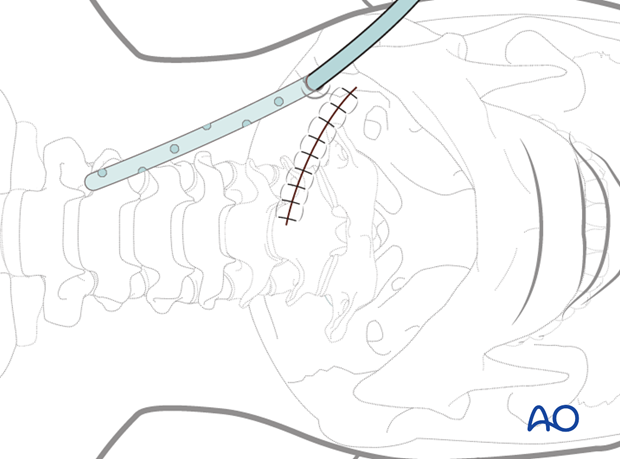Anterior access to C1–T2
1. Incision
The side of the incision, left or right, mainly depends on the surgeon’s preference.
With a left-sided approach the course of the recurrent laryngeal nerve is more predictable.
By using a right-sided approach the same nerve can be visualized and protected.
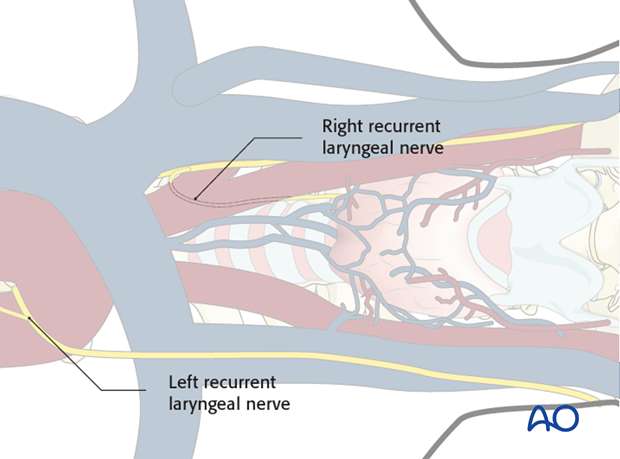
A transverse incision is made at the level required. A transverse incision will give a better cosmetic outcome.
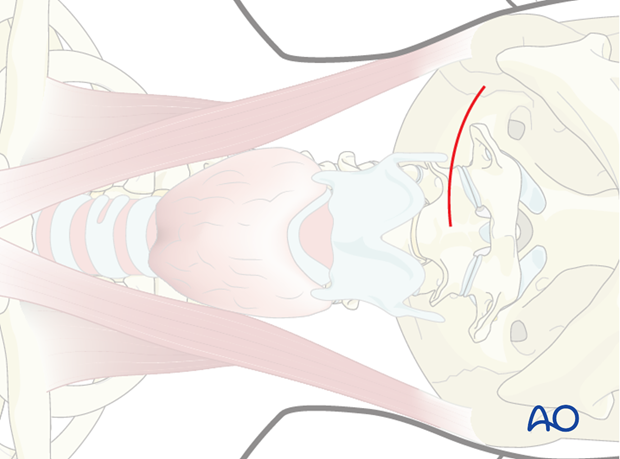
Injuries of the esophagus may be associated with fractures or occur as a complication of the approach.
In addition to the tracheo tube a nasogastric tube should be inserted to better identify, and thus help prevent, accidental injury to the esophagus.
These are serious and potentially lethal complications. Consultation with a neck surgeon should be obtained if injuries of the esophagus occur.
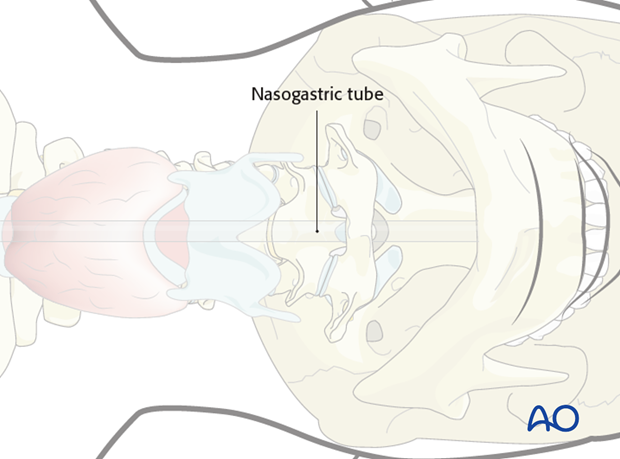
2. Dissection
The platysma muscle is transected in line with the skin incision.
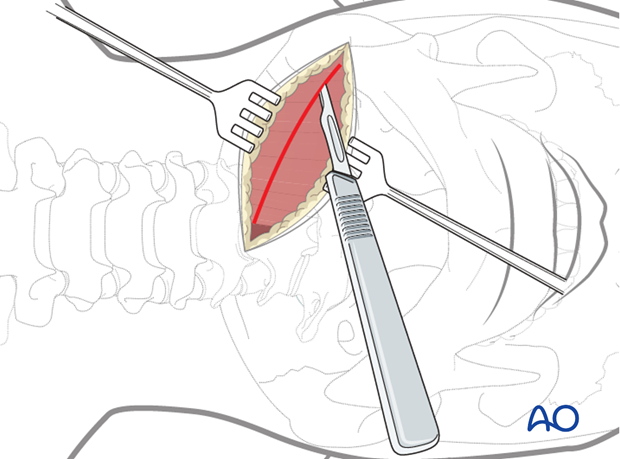
The deep cervical fascia is identified and divided along the anteromedial border of the sternocleidomastoid muscle.
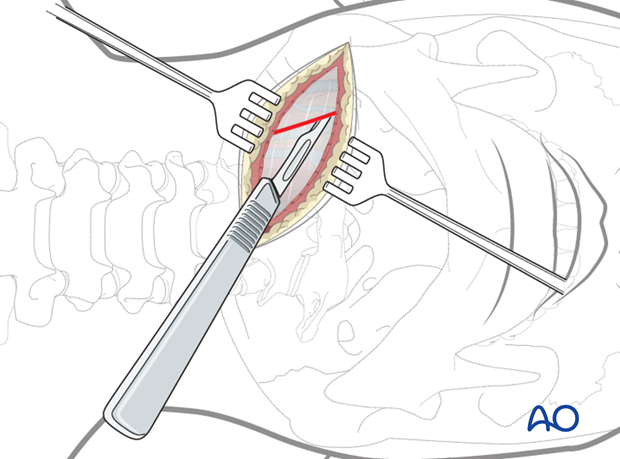
A finger is then used for blunt dissection between the carotid sheath laterally and trachea and esophagus medially down to the prevertebral fascia.
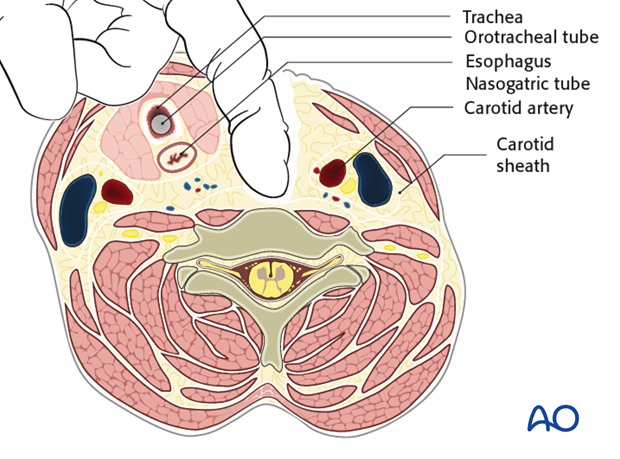
The prevertebral fascia is cut longitudinally allowing direct visualization of the vertebra and the longus colli muscle.
The level is verified with fluoroscopy.
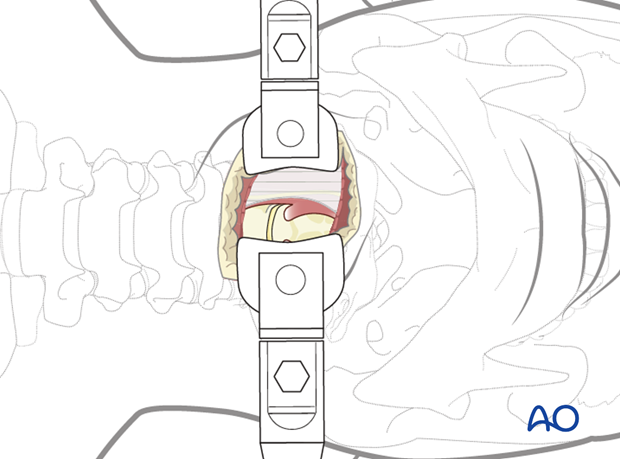
The longus colli muscle is mobilized and distractors are placed.
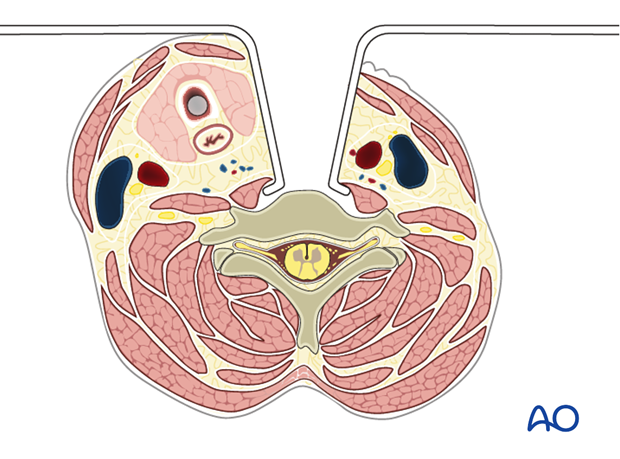
The recurrent laryngeal nerve is identified and protected.
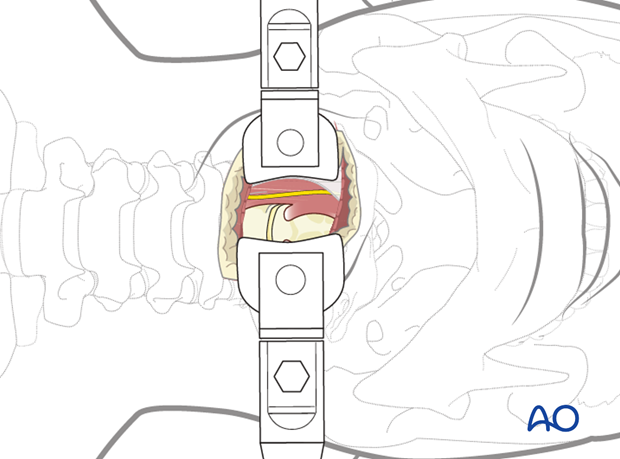
3. Closure
The platysma muscle is sutured followed by a subcutaneous and skin closure.
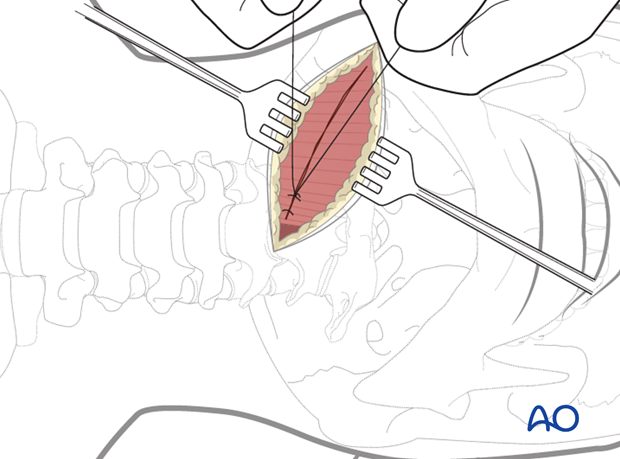
A wound drain is inserted through a separate stab incision.
